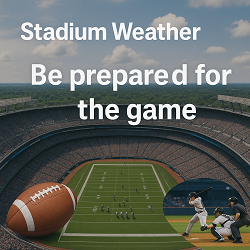Thorp, WA Weather Forecast and Current Conditions (98946)
Current Conditions From Nearby Station

Feels Like 42°F
at
Current Conditions From Nearby Station

Feels Like 42°F
at
Point Forecast at a Glance







This Date in Weather History
1959 - A tornado struck the town of Ivy, VA. Eleven persons were killed, including ten from one family.
More on this and other weather history
Thorp 7 Day Weather Forecast Details
Wednesday Oct 1

Night: Partly cloudy. Low around 39, with temperatures rising to around 41 overnight. North wind around 1 mph.
Thursday Oct 2

Day: Mostly cloudy. High near 64, with temperatures falling to around 62 in the afternoon. East wind 1 to 5 mph.

Night: Mostly clear. Low around 41, with temperatures rising to around 43 overnight. Northwest wind around 7 mph.
Friday Oct 3

Day: Sunny, with a high near 67. Northwest wind 7 to 20 mph, with gusts as high as 30 mph.

Night: Partly cloudy, with a low around 44. Northwest wind 15 to 20 mph, with gusts as high as 30 mph.
Saturday Oct 4

Day: Sunny, with a high near 65.

Night: Mostly clear, with a low around 40.
Sunday Oct 5

Day: Sunny, with a high near 65.

Night: Clear, with a low around 39.
Monday Oct 6

Day: Sunny, with a high near 68.

Night: Clear, with a low around 39.
Tuesday Oct 7

Day: Sunny, with a high near 70.

Night: Mostly clear, with a low around 42.
Wednesday Oct 8

Day: Sunny, with a high near 72.
Sun & Moon Monthly
Sunrise 7:03 AM
Sunset 6:43 PM
Last Light 7:14 PM
Moonset 12:07 AM

Contiguous United States Extremes
Wed's High Temperature
101 at Rio Grande Village, TX
Wed's Low Temperature
26 at Saranac Lake, NY and 2 Miles East Of Alfred, NY
Weather Folklore
Many springs that have gone dry will have a good flow of water before rain.
Current subscribers - login to your ClearSky account
About Thorp, Washington
Thorp ( THORP) is an unincorporated community and census-designated place (CDP) in Kittitas County, Washington, United States. In 2020, the population was 232.
The town of Thorp is 100 miles (160 km) east of Seattle, 8 miles (13 km) northwest of Ellensburg, and 17 miles (27 km) southeast of Cle Elum. It is located at the narrow west end of the Kittitas Valley, where high elevation forests of the Cascade Range give way to cattle ranches surrounded by farmlands noted for timothy hay, alfalfa, vegetables, and fruit production.
Thorp is named for Fielden Mortimer Thorp, recognized as the first permanent white settler in the Kittitas Valley. He established a homestead at the approach to Taneum Canyon (, TAYN-əm) near the present-day town in 1868. Klála, an ancient Native American village and the largest indigenous settlement in the Kittitas Valley at the arrival of the first white settlers, was located about one mile above the current town site.
Content from Wikipedia, licensed under CC BY-SA 3.0.
How We Provide Better Local Weather
Current conditions: We use the nearest available station to your location - including professional MESONET/MADIS and local weather stations - often miles closer than regional airports.
Forecasts: National Weather Service point forecasts predict for your specific area, not broad regional zones, making them far more relevant to your location.

